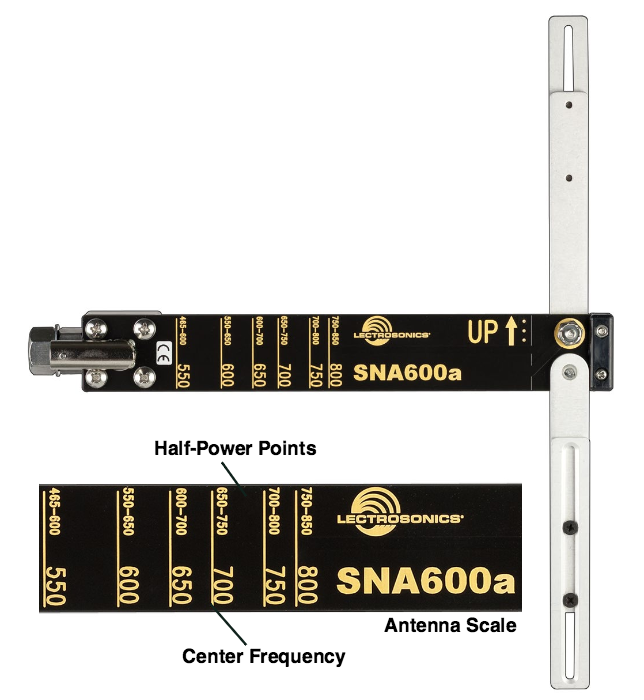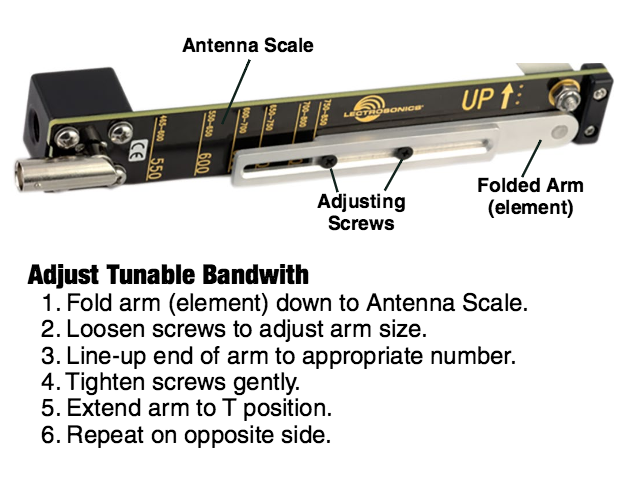This afternoon I stopped off at Arts 5th Avenue in Fort Worth Texas to deliver a RF hand held mic system. I had a choice of (2) Sennheiser EW100 series G2 systems. One in the A band (516mHz to 558mHz) & the other in the B band – (620mHz to 668mHz). I’ve had trouble getting the unit in the B band to work in Fort Worth but not in Dallas. Why?
INSERT TRACE HERE:
While I had the two systems side by side I noticed that the whip antenna’s for both rigs are the same maximum length. In fact, after that, I checked an old 700mHz system and it has the same whip antennas. Can the same receiving antenna (extended to the same length) be optimal for picking up 3 different frequency bands? Logic would suggest no but I don’t know enough about RF principles to know. Obviously I have a lot to learn about how antenna’s work…
A clue is given to us by Lectrosonics. Their SMA600 dipole antenna is adjustable and the length to frequency increments are etched right on the antenna.
Lectrosonics – SNA600 dipole antenna PDF

The length of an antenna is it’s tuning. Knowing that, we can’t ignore the length of our antenna’s as they relate to different frequency ranges. Obviously an antenna might work to some degree regardless of it’s length (think coat hanger for a TV antenna) but that doesn’t mean that the signal is being captured optimally.
Here is a website that provides an antenna wave length calculator:
csgnetwork.com – antenna generic frequency calculator


